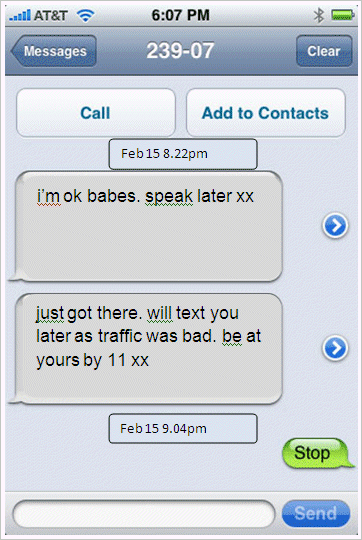Forensic linguistics: a starter
Forensic linguistics is a growing area of language study that combines the analysis of language with solving crimes. All of us use language in subtly (and sometimes not very subtly) different ways – so when we write or speak, we leave clues that sharp-eyed language detectives can pick up.
In this resource, we take a quick look at the kinds of clues forensic linguists look for when they try to work out the identity of a writer.
Some time over the evening of February 15th and morning of February 16th, Melinda Butler disappeared. She was last seen in a bar in Reading soon after 9 pm on the 15th and was expected to arrive at her boyfriend’s house that night. She didn’t arrive, but he received two texts the next day – one soon after midnight and one some time after 9 am – saying that Melinda was ill and had gone home.
When police checked her flat, she wasn’t there. A day later she still hadn’t been tracked down.
Below you can see two sets of text messages. One set is from Melinda on February 15th and the other set was received on the 16th. The forensic linguists brought on to the case don’t believe the second set are actually from Melinda. What language evidence can you find to suggest that the senders of the two sets of text messages are not the same person?
Try to pick out five separate language features that you think point to two different people sending the texts.
Data set 1 – February 15th

Data set 2 – February 16th

For suggested answers, see the next resource page.
- Printer-friendly version
- Log in to view or leave comments


